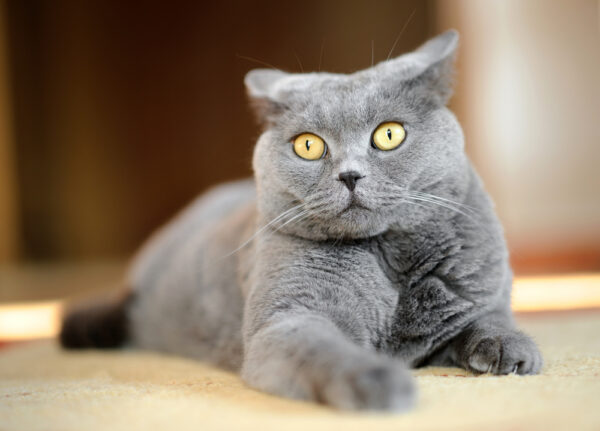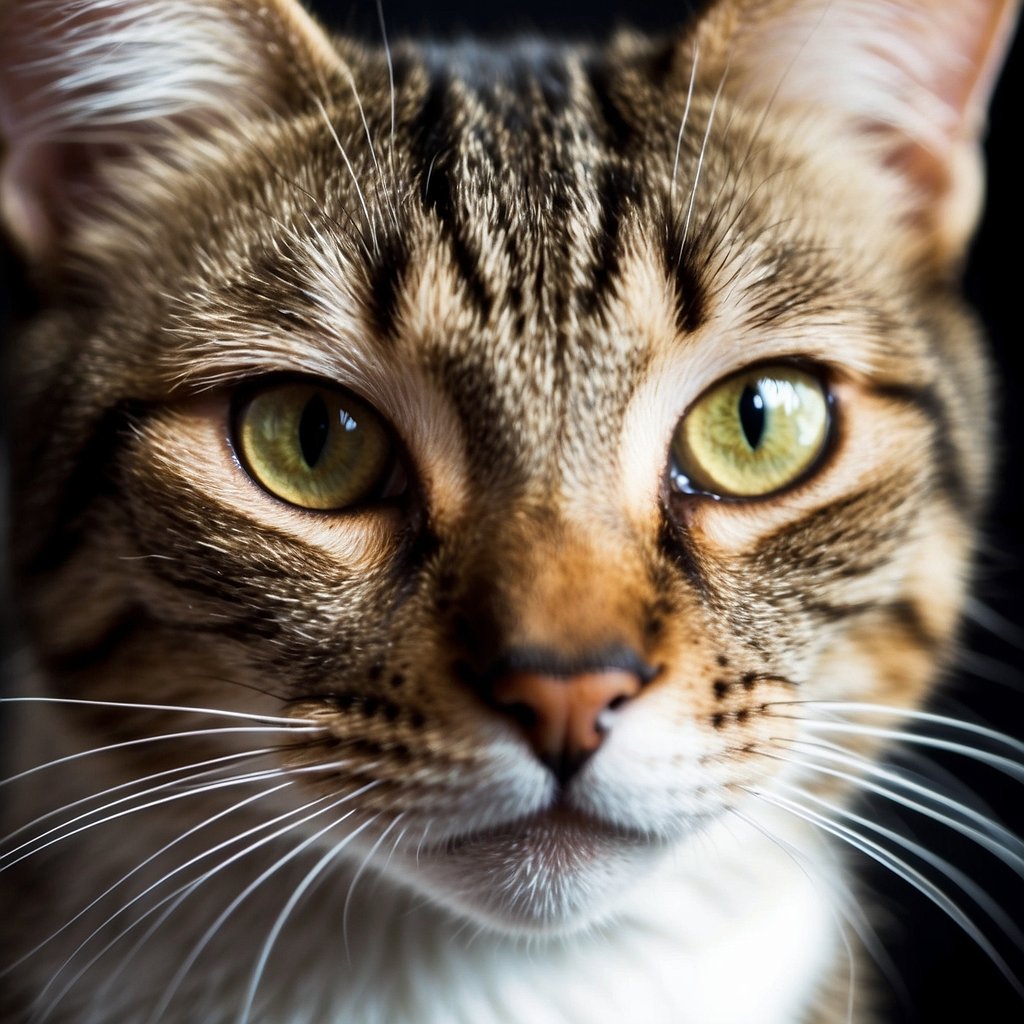
Cat Ear Positioning: Cat Airplane Ears Meaning
Cat ear positioning is a vital aspect of feline non-verbal communication, providing insight into their emotions and intentions. Known as ‘airplane ears,’ a cat’s ear placement is an expressive part of their body language, often overlooked in understanding their moods and behaviors. When a cat’s ears are flattened, resembling the wings of an airplane, it is generally reflecting a particular emotional or physical state. Deciphering this ear language can foster a deeper bond between cats and their owners, as recognizing these signals enhances understanding and can even alert owners to potential health issues.
The posture of a cat’s ears is influenced by various factors, including their emotional state and overall well-being. A cat may display airplane ears during play as a sign of excitement or arousal, but the same positioning could indicate fear, annoyance, or aggression in different scenarios. Noticing the context in which these signals are displayed is crucial for accurate interpretation. Additionally, certain health conditions can influence a cat’s ear positioning, making it an important element to monitor for signs of illness or discomfort.
Key Takeaways
- Cat ear positioning, such as airplane ears, reveals their emotional states and intentions.
- Ear language interpretation helps strengthen the bond between cats and their caretakers.
- Monitoring ear positions can be indicative of a cat’s health and well-being.
Understanding Cat Ear Language

Cats communicate much about their emotional state and intentions through ear movement and position, key elements of their nonverbal language. By observing these subtle cues, one can gain insight into a feline’s mind.
The Basics of Feline Ear Movements
The ears of a cat are highly mobile and can move independently of each other thanks to a specialized muscle structure. This capability allows them to direct their ears towards sounds of interest or fold them back when they are scared or agitated. Recognizing and interpreting these movements is an essential part of understanding cat ear language.
- Forward: When a cat’s ears are in a forward position, they are typically signaling contentment or curiosity.
- Upright and Still: Ears that are upright and still indicate a cat’s neutral and relaxed state.
- Swiveling: Ears that constantly swivel display alertness and the cat’s attempt to pinpoint the source of a sound.
- Flattened (“Airplane” Ears): Ears that are flattened against the head, often referred to as “airplane ears,” signify fear, aggression, or irritation.
Common Cat Ear Positions
A cat’s ear position can reveal a lot about their mood and next possible actions. Observing these positions is a fundamental aspect of interpreting body language in felines.
- Straight Up: This position often means a cat is alert and interested in its surroundings.
- To the Side: When a cat’s ears are tilted out to the side, they may be feeling relaxed or could be in a playful mood.
- Backward or Flattened: Ears pinned back against the head can indicate a defensive position, possibly signaling fear, anxiety, or aggression.
By paying attention to a cat’s ear movements and positions, one can understand a substantial portion of their nonverbal language and better predict their behavior.

Decoding Cat Airplane Ears
In observing feline behavior, the position of a cat’s ears provides key insights into its emotional state. Specifically, ‘airplane ears’, a term used to describe the sideways positioning of a cat’s ears, is a manifestation of certain internal feelings.
Significance of Airplane Ears
Airplane ears in cats exhibit a unique posture wherein their ears rotate to the side, resembling the wings of an airplane. This ear position is often an indicator of a cat’s emotional distress. Airplane ears may signify that the cat is feeling nervous, frightened, or experiencing a general sense of uneasiness. It’s a visual cue suggesting that the cat is on high alert and may perceive a potential threat.
Associated Behaviors
When a cat displays airplane ears, it may exhibit additional behaviors consistent with being in a state of apprehension. Such behaviors can include:
- Low growling or hissing: Vocalizations that indicate fear or a warning to others not to come closer.
- Twitching tail: A clear sign of agitation and discomfort.
- Withdrawal: The cat may retreat to a safer or more secluded space.
- Arched back: Ready to take a defensive stance if necessary.
Understanding these behaviors, in conjunction with airplane ears, provides a more thorough context for assessing a cat’s emotional wellbeing.

Emotional State Indicators
In felines, ear positioning is a significant non-verbal cue that reveals a cat’s emotional state. Understanding this aspect can greatly enhance the interpretation of a cat’s feelings and intentions.
Link Between Ear Positioning and Emotion
Cats communicate their emotions largely through body language, with ear positioning being a crucial component. Ears that are flattened sideways, commonly referred to as “airplane ears,” often indicate that a cat is experiencing fear or anxiety. This ear posture can serve as a warning that the cat is feeling threatened and may act defensively. On the other hand, when a cat’s ears are upright and facing forward, it typically suggests a state of alertness or curiosity.
- Neutral Position: Ears are upright and facing forward
- Fearful or Anxious: Ears are flattened sideways (airplane ears)
- Aggressive or Irritated: Ears are turned back sharply
Facial Expressions and Vocalizations
Facial expressions and vocalizations accompany ear positions to communicate a cat’s emotional state more clearly. A cat with airplane ears may also have dilated pupils, a tense body, and might hiss or growl. Such vocalizations corroborate the emotional state implied by ear positioning. In contrast, relaxed facial features combined with forward-facing ears could indicate a happy or content emotional state, often accompanied by purring or gentle meowing.
- Relaxed: Soft eyes, slow blinking, upright ears, purring/meowing
- Stressed or Afraid: Dilated pupils, hissing/growling, airplane ears
By observing these visual and auditory cues, one can confidently assess a cat’s emotional state, enhancing the interaction and bond between cats and their human companions.
Health-Related Ear Signals
Cat ear positioning can often signal an underlying health condition, from infections to mites. Observing the nuances in their ear movements is crucial for early detection and timely treatment.
Ear Infections and Mites
Ear Infections are a common issue among cats and can cause noticeable changes in ear positioning. Signs of an ear infection include:
- Cat holding one ear lower than the other
- Persistent scratching or pawing at the ears
- Head shaking or tilting
Ear infections demand prompt veterinary attention, as they can lead to discomfort and, in severe cases, hearing loss. Ear Mites, tiny parasites living in the ear canal, can also trigger similar symptoms. Examination by a vet is necessary to confirm their presence and to prescribe appropriate treatment.
Distinguishing Illness Signs from Behavior
It is imperative to distinguish between ear signals related to health issues and those stemming from behavioral causes. Here are specific cues to consider:
| Behavior | Health-related Signs |
|---|---|
| Fear or Submissiveness | Ear mites or infection can cause ears to flatten sideways or backward. |
| Aggressive Posture | In contrast, ear pain due to medical issues often leads to the ears being held asymmetrically or at non-uniform angles. |
Persistent ear positioning abnormalities, especially when coupled with aggressive behavior when touching the ears, should be evaluated by a veterinarian. They could indicate an underlying medical condition, such as an ear infection or the presence of ear mites, rather than behavior related to fear or imminent attack.
Behavioral Contexts
In the intricate language of feline communication, cat ear positions serve as critical indicators of their emotional and mental state. Observing these positions can provide insights into the contexts of behavior such as aggression, hunting, and resting.
Ears in Aggression and Hunting
When a cat is displaying aggressive behavior or is engaged in hunting, their ears assume a distinctive position. In an aggressive stance, the ears might flatten sideways or backward, resembling an airplane—often referred to as “airplane ears.” This ear positioning serves as a warning signal to others and is a defensive mechanism designed to protect the ears from potential harm during a confrontation. The orientation of a cat’s ears during hunting communicates intense focus and curiosity. The ears will be pricked forward, aligning with their keen gaze, honing in on potential prey and signifying a high level of concentration.
- Aggression: Flat, turned sideways or backward (“airplane ears”).
- Hunting: Forward and upright, indicating focus.
Ears While Resting and in Neutral States
Cats exhibit a neutral ear position when they are relaxed and content. A cat’s ears in a neutral state typically stand erect and face forward without being overly tense. This position indicates that the cat is alert but not actively focused on any particular threat or point of interest. It’s the default state for a cat’s ears, reflecting a sense of calm and a neutral demeanor. During restful periods, ears may shift slightly to the side but remain upright, suggesting a relaxed state while still maintaining some awareness of their environment.
- Neutral State: Erect and facing forward, indicating alertness and contentment.
- Resting: Slightly to the side but remaining upright, reflecting relaxation with some alertness.

Frequently Asked Questions
The position of a cat’s ears can reveal much about its emotions and intentions. Here we explore common questions regarding the ‘airplane ears’ posture and what it signifies in feline behavior.
What does it indicate when a cat’s ears are in the ‘airplane’ position?
When a cat’s ears are splayed out to the sides, resembling the wings of an airplane, it typically signals a relaxed, neutral state or mild annoyance. It is crucial to assess the context and other body language cues to interpret this ear posture accurately.
Can the ‘airplane ears’ position be associated with certain behaviors or emotions in cats?
Yes, ‘airplane ears’ may be associated with feelings of uncertainty or slight discomfort. A cat may position its ears this way when it is not feeling entirely at ease with its surroundings or is in a mildly submissive state.
What should I look out for if my cat frequently exhibits ‘airplane ears’ while interacting with me or during play?
Consistent ‘airplane ears’ during interaction or play may suggest the cat is not fully comfortable or is feeling ambivalent. Look for accompanying signs, such as a twitching tail or dilated pupils, to better understand the cat’s emotional state.
How do ‘airplane ears’ in cats differ from other ear positions, such as flattening or twitching?
‘Airplane ears’ indicate a less intense emotion compared to flattened ears, which often convey fear, aggression, or irritation. Twitching ears suggest alertness and attention to surrounding sounds. Each ear position is a distinct indicator of a cat’s mood and attention.
Could ‘airplane ears’ be a sign of discomfort or an ear infection in my cat?
While ‘airplane ears’ can indeed be a posture of mild discontent, it is not typically a sign of physical discomfort or an ear infection. However, if this posture is accompanied by scratching, head shaking, or discharge from the ears, it is advisable to consult a veterinarian.
In what situations are ‘airplane ears’ most commonly observed in cats, such as during eating or sleeping?
Cats may exhibit ‘airplane ears’ in various situations where they feel moderately relaxed yet cautiously aware of their environment. This ear position can be observed when they are lounging but still paying attention to stimuli around them, or occasionally while eating if they sense a potential disturbance.